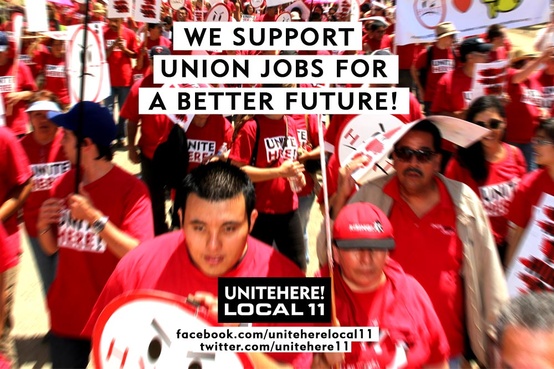
The union membership rate was 11.3% in 2012, down from 11.8% in 2011, according to the U.S. Bureau of Labor Statistics (BLS), which released updated figures today. This decrease in union membership highlights the painful fact that people are working harder but are making less and less.
One area that saw a significant loss was in the public sector. There are nearly 400,000 fewer union members, from teachers in the classroom to police and firefighters that keep us safe. In manufacturing, the jobs that have returned so far are largely low-wage, nonunion jobs.
The BLS union density numbers reflect the political and ideological assaults on workers’ rights that peaked over the past two years. These attacks on working people resulted in membership losses, stagnant wages and increasing income inequality.
Still, the number of union members is increasing in growing sectors of the economy, and union membership is also rising among nonwhite workers, including Hispanics and Asians, who are beginning to show meaningful job growth following the economic downturn. There were gains in business and professional services, which includes waste services.
Looking at the states, there were increases in union membership in Texas, Georgia, Nevada and North Carolina and continued growth in California. Membership is also up in Oklahoma.
AFL-CIO President Richard Trumka said:
Working women and men urgently need a voice on the job today, but the sad truth is that it has become more difficult for them to have one, as today’s figures on union membership demonstrate.
Union membership impacts every other economic outcome that matters to all workers – falling wages, rising health care costs, home foreclosures, the loss of manufacturing jobs and disappearing retirement benefits. Collective action through unions remains the single best way for working people to effect change. But our still-struggling economy, weak laws and political as well as ideological assaults have taken a toll on union membership, and in the process have also imperiled economic security and good, middle class jobs.
What will define the labor movement of the future, however, is not assaults or the changing economy, but how working people come together to respond to them. We enter 2013 with our eyes open and understand that these challenges offer real opportunities for working people to reshape the future. Working families are building community alliances, engaging with young workers and immigrants, fighting right-wing politicians and organizing in innovative ways. From taxi workers to teachers to nurses to Wal-Mart workers to port workers to freelance writers, working Americans are committed to building a new movement for the future and to creating good jobs and an economy that works for all.

